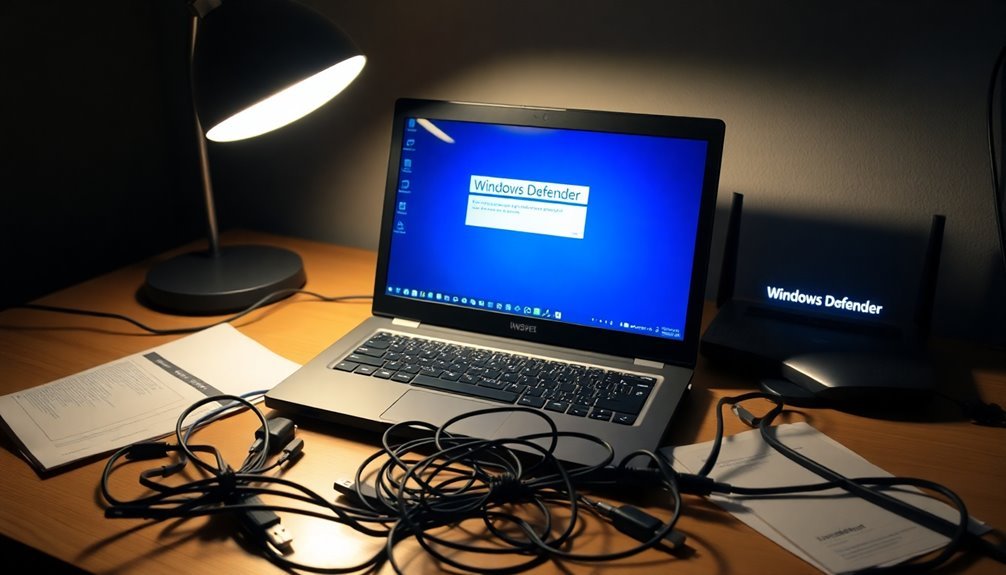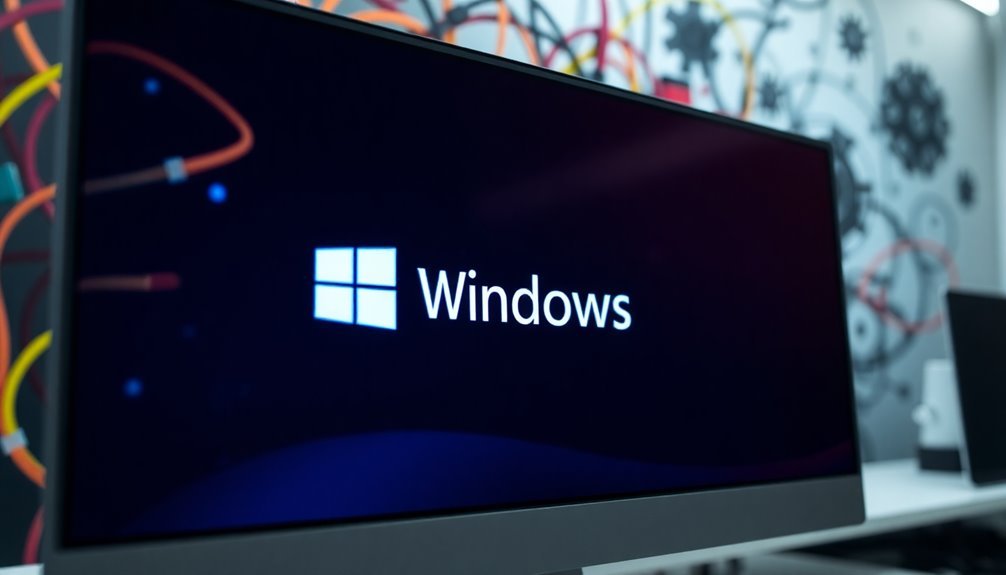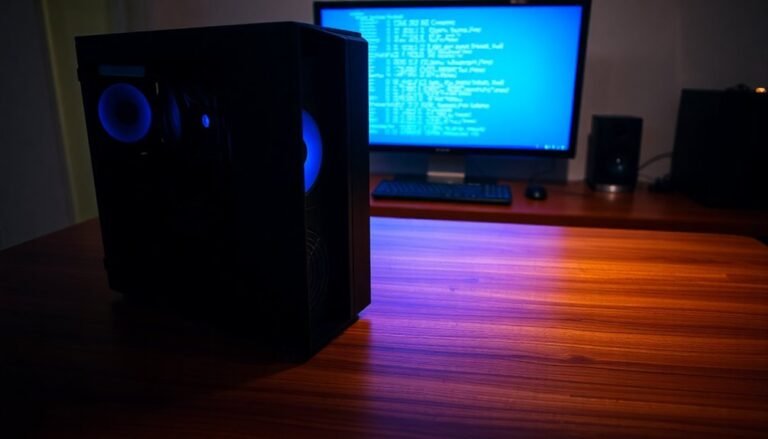Windows Defender Not Working: Fix Windows Security Issues

If Windows Defender isn’t working, start by checking for any third-party antivirus software, as it often disables Defender. Additionally, corrupted system files may lead to issues, so run `sfc /scannow` in Command Prompt to repair them.
Make sure that Real-time protection is activated in the Windows Security app. Also, confirm your Group Policy settings to ensure everything is correctly configured.
It’s essential to correct any configurations to restore Defender’s functionality. Would you like to know additional steps to troubleshoot and enhance your Windows security?
Causes of Windows Defender Malfunction

Windows Defender is a powerful tool designed to protect your PC from various cyber threats. However, its functionality can sometimes be compromised due to several common issues.
One major cause of Windows Defender malfunction is the installation of third-party antivirus software, such as Kaspersky or McAfee. These programs often disable Windows Defender automatically, leading to conflicts and preventing it from launching.
Another potential issue arises from corrupted system files, which can occur as a result of malware infections or failed updates. Such corrupted files can hinder Windows Defender’s operations, causing the software to crash or fail to open altogether. Corrupt system files can severely impact Windows Defender’s ability to operate effectively.
Additionally, incorrect system configurations, particularly within Group Policy or registry settings, can disable critical functions of Windows Defender.
Firewall settings also play a significant role in the effective operation of Windows Defender. If the Windows Defender service or firewall is turned off, the antivirus can’t function properly.
It’s also essential to ensure that your system’s date and time settings are accurate, as discrepancies can disrupt updates and overall functionality.
To maintain optimal protection, regularly check for updates to your Windows version and resolve any existing compatibility issues. By addressing these factors, you can enhance the reliability of Windows Defender and ensure robust protection for your device.
Enabling Real-Time Protection
Enabling real-time protection in Windows Defender is essential for maintaining robust antivirus security on your Windows device. Here are several methods to easily activate this feature based on your preferences and system configuration.
- Using the Windows Security App:
- Press Win + I to quickly open the Settings menu.
- Navigate to Update & Security, then click on Windows Security.
- Under Virus & threat protection settings, toggle the Real-time protection switch to turn it on.
- Through Group Policy Editor:
- Open the Local Group Policy Editor by typing `gpedit.msc` in the search bar.
- Navigate to Computer Configuration > Administrative Templates > Windows Components > Microsoft Defender Antivirus > Real-time Protection.
- Enable the relevant policy to activate real-time protection.
- Utilizing the Registry Editor:
- Open the Registry Editor by typing `regedit` in the search box.
- Locate the DWORD value at HKEY_LOCAL_MACHINE\SOFTWARE\Policies\Microsoft\Windows Defender to adjust settings for advanced control.
Please proceed with caution, as incorrect changes may affect system stability. Additionally, be mindful that automatic reactivation of real-time protection occurs post-restart unless modified through Group Policy or Registry settings.
Important Note: Real-time protection will automatically reactivate after you restart your system unless modified through Group Policy or Registry settings.
It’s also crucial to ensure that any third-party antivirus software has been uninstalled to fully enable Windows Defender features.
Repairing Corrupt System Files
Repairing corrupt system files is crucial for ensuring optimal performance and stability of your Windows device. Corruption of system files can occur due to various factors, such as memory problems, incomplete updates, or unexpected power outages.
Common symptoms of file corruption include error messages and application crashes, both indicating potential integrity issues with your files.
To effectively identify and repair these corrupted files, you can utilize built-in command-line tools like chkdsk and the Windows System File Checker (SFC). To start using SFC, launch an elevated Command Prompt and type in `sfc /scannow`. This command conducts a thorough scan of your system and automatically repairs any corrupted files by replacing them with cached versions, ensuring your system runs smoothly.
In cases where SFC is unable to resolve all corrupted files, it may be necessary to employ the Deployment Image Servicing and Management Tool (DISM). You can do this by executing the command `DISM /Online /Cleanup-Image /RestoreHealth`.
It’s recommended to regularly run these diagnostic tools to prevent persistent errors and maintain system integrity.
In addition to these repair strategies, keeping your operating system updated and protecting your device from malware are essential practices that can significantly minimize the risk of file corruption.
Regular maintenance and proactive security measures will help ensure your Windows device remains in top condition.
Modifying Group Policy Settings
Modifying Group Policy settings is crucial for tailoring Windows Defender’s functionality to align with your organization’s specific security requirements.
To optimize your Group Policy management, utilize the Group Policy Management Console (GPMC) to edit the Group Policy Object (GPO) that governs Defender settings. Access the configuration path to configure your settings effectively:
– Computer Configuration → Administrative Templates → Windows Components → Microsoft Defender Antivirus
Within this section, you can enable or disable various features and tweak Defender’s behavior to enhance protection.
To ensure your changes are applied correctly, make sure to update and link the GPO to the relevant Active Directory containers.
For improved network protection, establish policies that block access to known malicious domains by navigating to:
– Computer Configuration → Policies → Administrative Templates → Microsoft Defender Exploit Guard → Network Protection
Additionally, keep in mind that tamper protection might prevent modifications unless you’re in troubleshooting mode.
Regular audits of your GPO settings are essential to guarantee that Windows Defender functions optimally and securely within your network infrastructure.
Adhering to these best practices will help maintain a robust security posture against potential threats.
Removing Third-Party Antivirus Conflicts

Conflicts with third-party antivirus software can significantly impair the performance of Windows Defender, making it crucial to resolve these issues swiftly.
When you install a third-party antivirus, it typically disables Microsoft Defender to prevent conflicts. Some antivirus solutions may allow Defender to operate in a limited passive mode, which can cause inconsistencies in threat detection and security levels.
To eliminate potential conflicts and enhance system security, follow these optimized steps:
- Access Windows Settings: Open the Windows Settings menu and navigate to Apps > Installed apps to locate your third-party antivirus software.
- Uninstall Third-Party Antivirus: Utilize the antivirus’s built-in uninstaller or visit the vendor’s website for a dedicated removal tool to ensure a thorough cleanup of all components.
- Restart Your Computer: After uninstallation, restart your PC to enable Windows Defender to reactivate completely.
- Confirm Removal: Once your computer has rebooted, check Task Manager to confirm the third-party antivirus is no longer running.
- Run a Windows Defender Scan: Execute a Windows Defender scan to verify that real-time protection is functioning properly.
- Troubleshoot as Needed: If Windows Defender doesn’t activate automatically, consider restarting critical Windows Security services or using Microsoft’s official troubleshooting tools to restore full functionality.
Frequently Asked Questions
How Do I Check if Windows Defender Is Running?
To check if Windows Defender’s running, open the Start menu, type “Security,” and launch the Windows Security app. Navigate to “Virus & threat protection” to confirm the status and verify it’s activated.
What Should I Do if Windows Defender Is Disabled by My Organization?
If Windows Defender’s disabled by your organization, consult your IT administrator about Group Policy restrictions. You can also check the Registry editor for modifications, but altering these settings without permission could violate company policies.
Can Windows Defender and Other Antivirus Software Run Simultaneously?
Yes, Windows Defender can run alongside other antivirus software, but you need to configure it in passive mode. This prevents conflicts, ensuring smoother operation, but you’ll sacrifice real-time protection from Defender during this setup.
How Can I Update Windows Defender Manually?
You can manually update Windows Defender by selecting “Check for updates” in Windows Security settings, running `MpCmdRun.exe -SignatureUpdate` in the command line, or transferring definition packages to an offline PC for installation.
Will Resetting Windows Affect My Windows Defender Settings?
Resetting Windows will indeed affect your Windows Defender settings, restoring them to defaults. You’ll lose customizations and policies, so be prepared to reconfigure after the reset to maintain your preferred security posture.
Conclusion
In summary, resolving Windows Defender issues is essential for your system’s security. Did you know that nearly 60% of Windows users encounter some form of security software conflict? By enabling real-time protection, repairing corrupt system files, adjusting group policy settings, and removing conflicting third-party antivirus programs, you can restore ideal functionality. Staying proactive in maintaining Windows Security not only protects your data but also enhances overall system performance, ensuring a safer computing experience.





